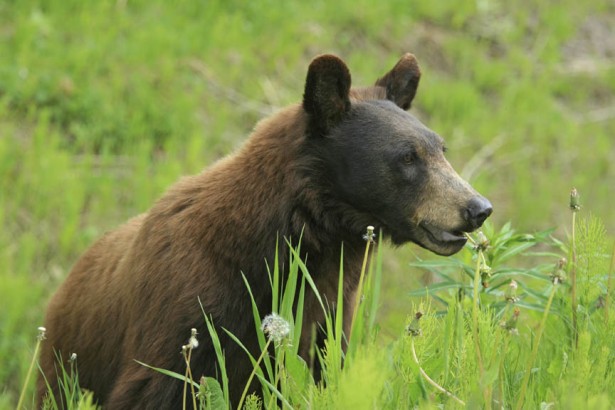
Spring has sprung, and so has the bear. KRTV in Montana reports that bear tracks have been observed in the snow at Glacier National Park, which means the bears are emerging from hibernation.
After months of sleep without food they are starting to get hungry, and park superintendent Chas Cartwright told the station, “Bear tracks in the snow are a good reminder that Glacier National Park is bear country and park visitors need to be alert for bear activity and to be familiar with and comply with safety regulations.”
American Indians and First Nations peoples, of course, have been living with these creatures for thousands of years and need no such warnings. According to the website Support Native American Art, the bear has long figured into legends and stories.
“Many Indians have different stories for the brown bear as a Native American Animal Symbol, and there is a special meaning throughout all tribes,” blogs Michaele, who holds an anthropology degree from Penn State with a concentration in Native American archaeology and a minor in religious studies. Intrigued by Native American spirituality because of her own Native heritage, she has researched the subject extensively, she says on her site.
“The brown bear stands for courage, strength, protection and life,” she writes. “If an Indian were given a name that included ‘bear,’ he knew that the tribe thought that he was brave.”
The grizzly, she writes, is viewed with awe and respect, even as a god. The Kermode bear, or spirit bear, is an all-white subset of the American black bear that lives in the north of British Columbia and is no relation at all to the polar bear.
This year some bears appear to be emerging early, at least at lower elevations in Colorado, the Aspen Times reported on March 17. Kevin Wright of the Colorado Division of Wildlife told the Aspen Times that although bears usually stir in April, one has already been spotted by a property manager, and another was hit by a car and killed.
A bear was also spotted at the Greenwood Conservation Area in Pickering, Ontario, Canada, according to the website 680news.com.
Wright said that newly awakened bears sort of sleepwalk in a state called walking hibernation as their digestive systems get going. “They usually walk around like they’re in a stupor,” Wright told the Aspen Times.
A couple of weeks later they get hungry and seek grasses and forbs, switching to berries and acorns later on, he added.
© 1998 - 2011 Indian Country Today. All Rights Reserved To subscribe or visit go to: http://www.indiancountry.com